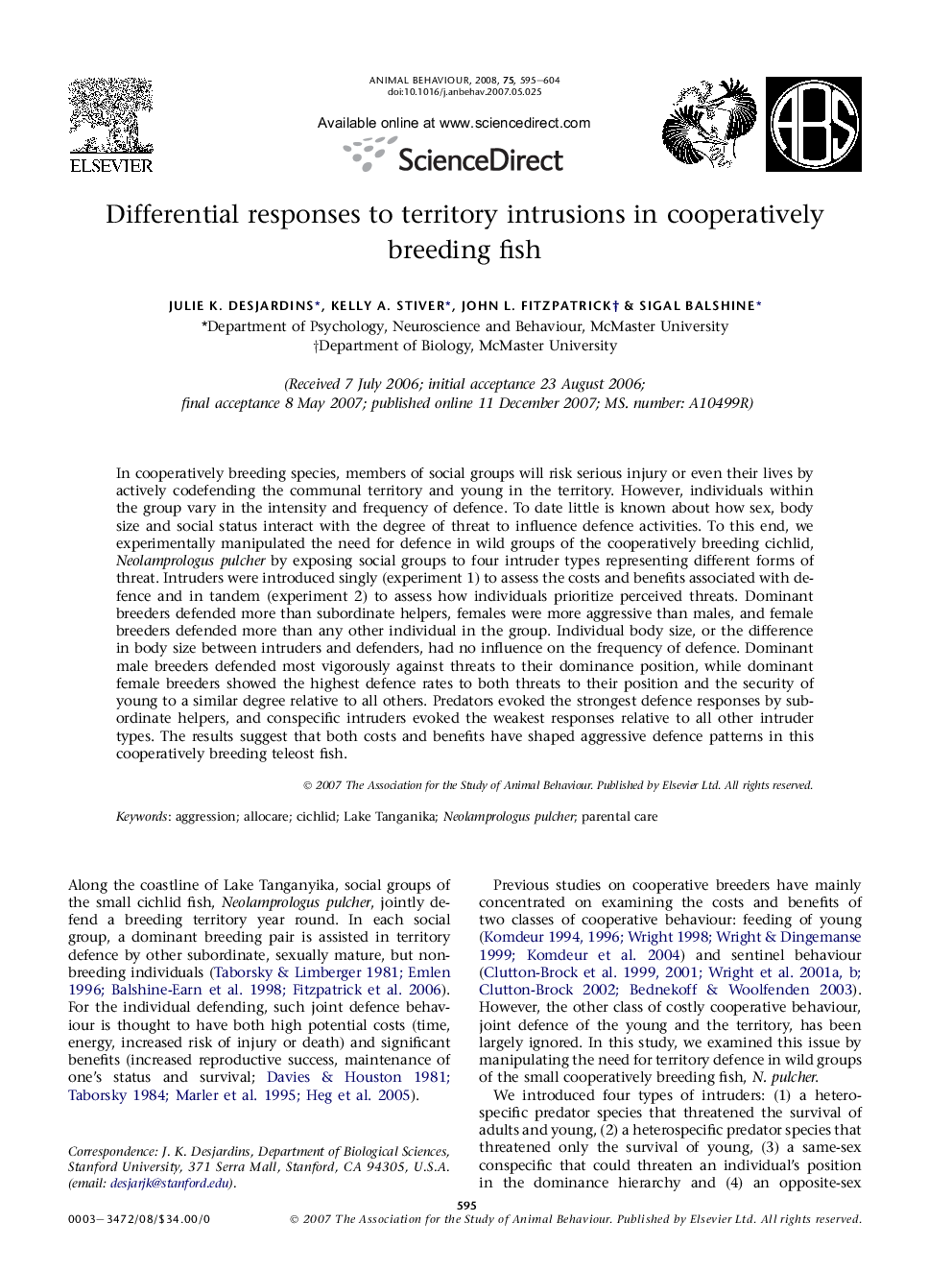| Article ID | Journal | Published Year | Pages | File Type |
|---|---|---|---|---|
| 2417909 | Animal Behaviour | 2008 | 10 Pages |
In cooperatively breeding species, members of social groups will risk serious injury or even their lives by actively codefending the communal territory and young in the territory. However, individuals within the group vary in the intensity and frequency of defence. To date little is known about how sex, body size and social status interact with the degree of threat to influence defence activities. To this end, we experimentally manipulated the need for defence in wild groups of the cooperatively breeding cichlid, Neolamprologus pulcher by exposing social groups to four intruder types representing different forms of threat. Intruders were introduced singly (experiment 1) to assess the costs and benefits associated with defence and in tandem (experiment 2) to assess how individuals prioritize perceived threats. Dominant breeders defended more than subordinate helpers, females were more aggressive than males, and female breeders defended more than any other individual in the group. Individual body size, or the difference in body size between intruders and defenders, had no influence on the frequency of defence. Dominant male breeders defended most vigorously against threats to their dominance position, while dominant female breeders showed the highest defence rates to both threats to their position and the security of young to a similar degree relative to all others. Predators evoked the strongest defence responses by subordinate helpers, and conspecific intruders evoked the weakest responses relative to all other intruder types. The results suggest that both costs and benefits have shaped aggressive defence patterns in this cooperatively breeding teleost fish.
